Cold email remains a powerful tool for marketers in today’s digital world. Both B2B and B2C companies rely on cold emails as a core part of their campaigns.
But how do you know if your cold emails are achieving their goals? You need to measure your campaigns and understand the key cold email conversion metrics.
Read on to find out which metrics matter most and how to use them for maximum impact in your email marketing campaigns.
TABLE OF CONTENTS
– What are conversion metrics?
– 10 conversion metrics for cold emails
– 1) Open Rate
– 2) Click-Through Rate (CTR)
– 3) Reply Rate
– 4) Conversion Rate
– 5) Bounce Rate
– 6) Unsubscribe Rate
– 7) Spam Complaint Rate
– 8) Engagement Time
– 9) Forward Rate
– 10) Return on Investment (ROI)
– Conclusions
What are conversion metrics?
Email marketing conversion metrics are a set of statistics that measure the success of your cold email campaigns in terms of how many recipients take a desired action after opening your email.
This action can vary depending on your campaign goals, but some common examples include
- Clicking on a link in your email (e.g. visiting your website, downloading a whitepaper)
- Making a purchase
- Signing up for a free trial
- Reply to your email
- Signing up for a webinar
By tracking these cold email metrics, you can measure how effective your emails are at moving recipients to the next step.
10 conversion metrics for cold emails
Here are some important cold email metrics to track to measure the success of your campaigns.
For better understanding, we will analyze each metric, explain why it is important, how to calculate it, and give you an example.
1. Open Rate
Open rate refers to the percentage of recipients who actually open your email out of the total number of emails delivered.
It’s an important metric because it shows how well your subject line and preheader are grabbing people’s attention and getting them to click through to read your message.
For example:
Let’s say you send a cold email campaign to 1,000 recipients. After excluding bounces, 800 emails are successfully delivered to inboxes. If 200 of those 800 delivered emails open your email, your open rate would be (200 opened emails / 800 delivered emails) x 100 = 25%.
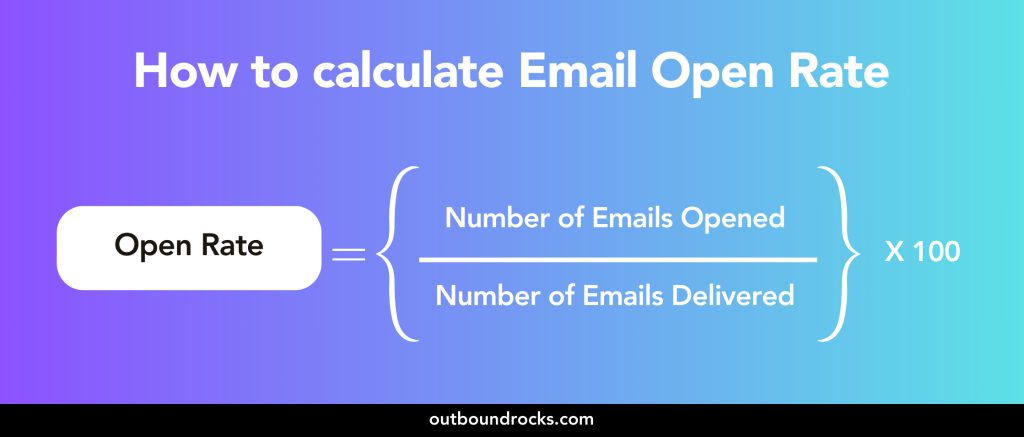
2. Click-Through Rate (CTR)
CTR, which stands for Click-Through Rate, measures the percentage of people who clicked on at least one link in your email compared to the total number of recipients who opened your email.
It goes a step further than open rate by showing how engaging the content of your email is and how well it motivates people to take action.
For example:
Let’s say you send an email campaign with a call to action (CTA) button that links to a product page on your website. You send the email to 1,000 subscribers and get an open rate of 25% (250 opens). Of those 250 opens, if 20 people clicked on the CTA link in your email, your CTR would be (20 clicks / 250 opens) x 100 = 8%.
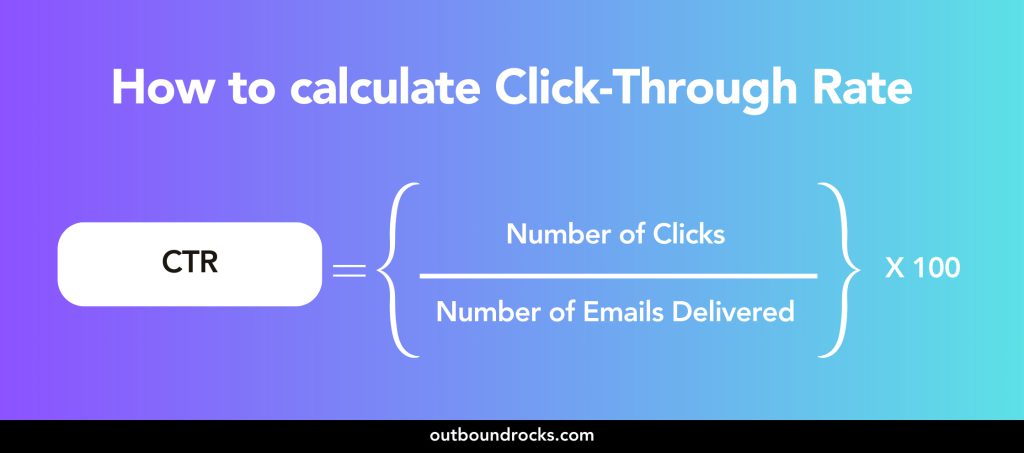
3. Reply Rate
Reply rate refers to the percentage of recipients who respond to your email with a reply message out of the total number of emails delivered (excluding bounces).
It’s a metric that shows how well your email content resonates with your audience and encourages them to engage in a direct conversation.
For example:
Say you send an email campaign about a customer satisfaction survey to 500 customers. After removing bounced emails, 480 emails are delivered. If you receive 24 responses from those delivered emails, your response rate would be (24 responses / 480 emails delivered) x 100 = 5%.
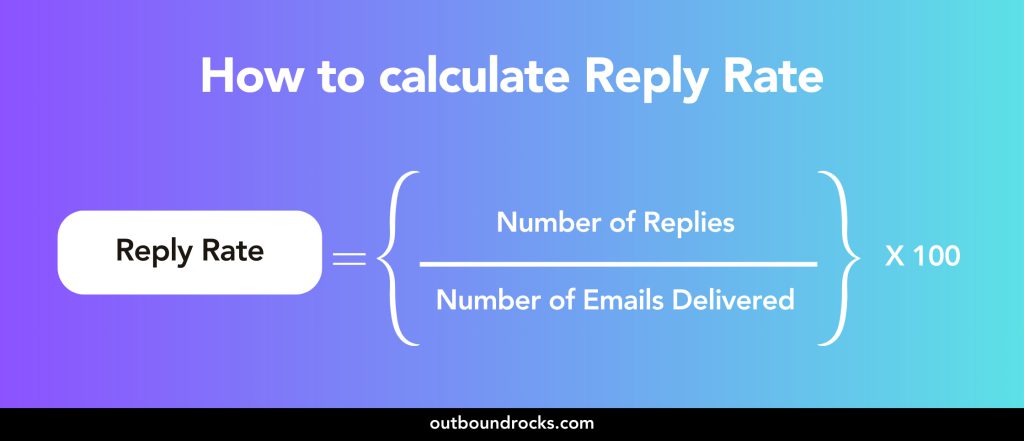
4. Conversion Rate
The conversion rate is the percentage of email recipients who take a desired action after opening your email. This desired action, also known as the conversion goal, can vary depending on the goals of your campaign.
Here are some common examples:
- Click a link
- Making a purchase
- Signing up for a free trial or service
- Downloading a resource
- Registering for a webinar or event
For example:
Let’s say you send an email campaign promoting a new discount code for 20% off your online store. You send the email to 1,000 subscribers and get a 30% open rate (300 opens). Of those 300 opens, if 20 people click on the link in your email and make a purchase using the discount code, your conversion rate for this campaign would be (20 conversions / 300 opens) x 100 = 6.67%.
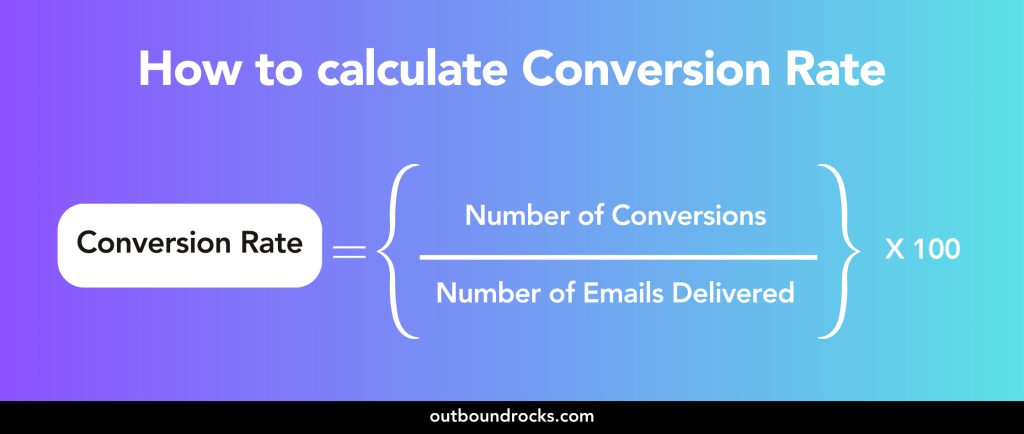
5. Bounce Rate
Bounce rate refers to the percentage of emails that couldn’t be delivered to the recipient’s inbox and are “bounced back” to you by the recipient’s email server. There are two main types of bounces: hard and soft bounce.
For example:
Let’s say you send an email campaign to 1,000 recipients. After the email blast, you receive notification that 20 emails bounced. To calculate your bounce rate, you would divide the number of bounced emails (20) by the total number of emails sent (1,000) and multiply by 100. In this case, your bounce rate would be (20 bounces / 1,000 sent emails) x 100 = 2%.
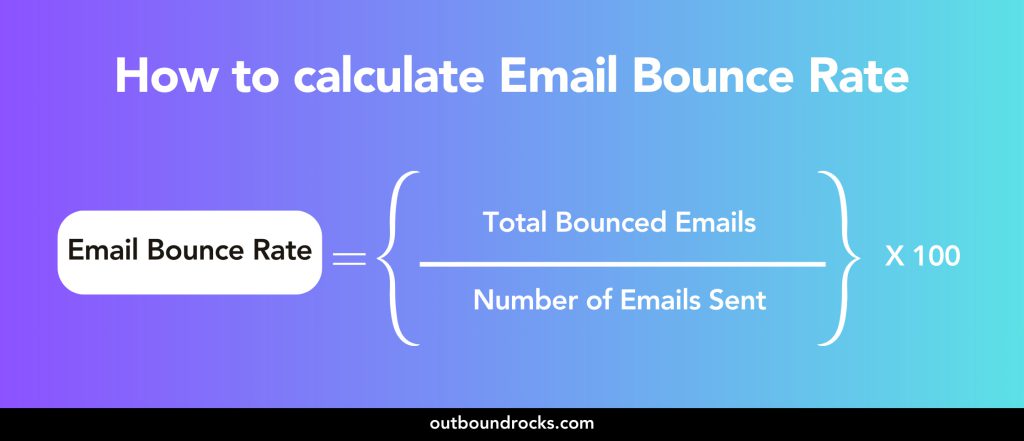
6. Unsubscribe Rate
The unsubscribe rate is the percentage of subscribers who choose not to receive your future emails. This typically happens when a recipient clicks on an unsubscribe link included in your email.
The unsubscribe rate indicates how well your email content is resonating with your audience and whether they find it valuable enough to stay on your list. A high unsubscribe rate indicates that your emails may be irrelevant, uninteresting or too frequent for some subscribers.
For example:
Let’s say you send an email campaign to your list of 5,000 subscribers. After the campaign, you notice that 30 subscribers have unsubscribed. To calculate your unsubscribe rate for this campaign, you would divide the number of unsubscribes (30) by the total number of emails sent (excluding bounces) and multiply by 100. For example, if 4,800 emails were successfully delivered, your unsubscribe rate would be (30 unsubscribes / 4,800 emails delivered) x 100 = 0.63%.
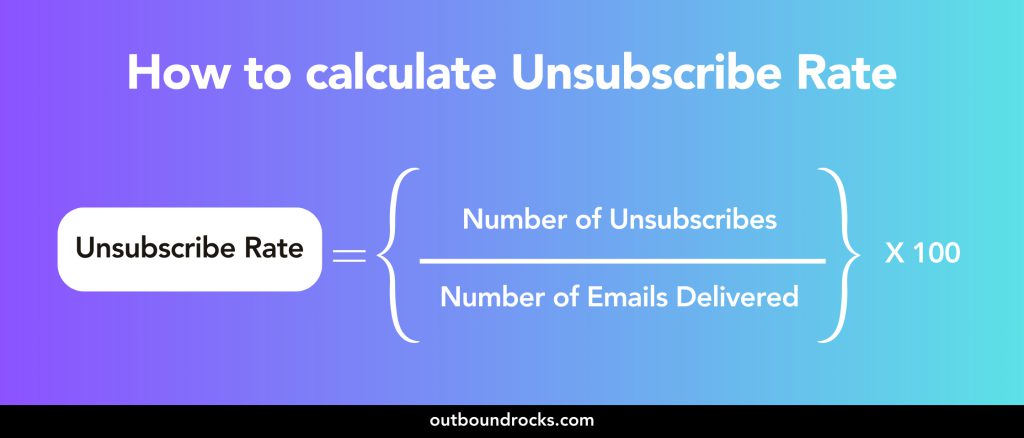
7. Spam Complaint Rate
The spam complaint rate refers to the percentage of email recipients who mark your email as spam. This happens when a recipient clicks a “Report Spam” button in their email client or marks your email as unwanted.
In general, a spam complaint rate below 0.1% is considered good practice. However, it’s important to continually monitor this metric and take action if your rate starts to rise.
This may include reviewing your email content for practices that may trigger spam filters (such as excessive use of exclamation points or ALL CAPS text) or ensuring that your email list is clean and up-to-date.
For example:
Imagine you send an email campaign to 1,000 recipients. After the campaign, you receive notification that 5 recipients marked your email as spam. To calculate your spam complaint rate, you would divide the number of spam complaints (5) by the total number of emails delivered (excluding bounces) and multiply by 100. In this scenario, your spam complaint rate would be (5 complaints / (let’s say) 980 delivered emails) x 100 = 0.51%.
8. Engagement Time
Engagement time is another cold email metric that attempts to measure how long a recipient spends reading your email.
It’s important to note that engagement time is not always a simple metric and can be less reliable than others.
This means that there is no specific formula. Typically, it is measured using tracking tools to calculate the average time recipients spend interacting with email content.
9. Forward Rate
Forward rate refers to the percentage of recipients who choose to forward your email to someone else in their network. It indicates how shareable and valuable your content is perceived to be by your audience.
A high forward rate is a positive indicator that your email content resonates with your audience and is valuable enough for them to share with others.
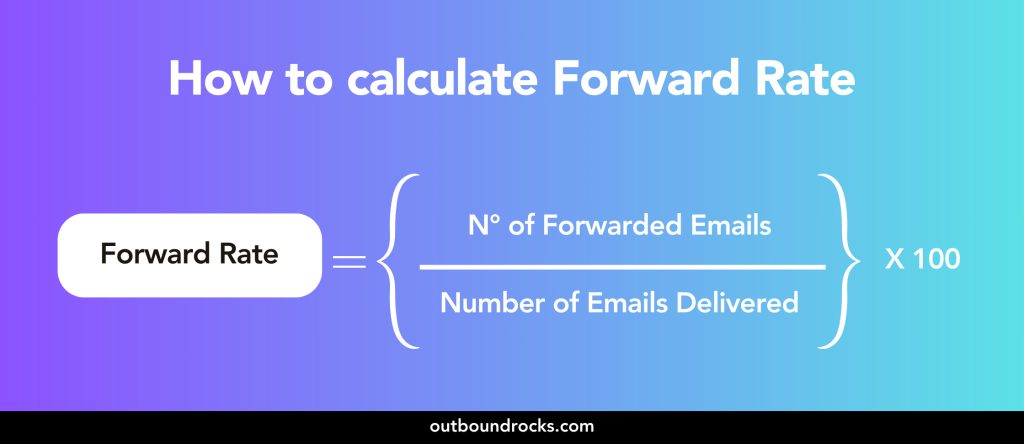
10. Return on Investment (ROI)
ROI stands for Return on Investment. It’s a metric used to assess the profitability or overall effectiveness of an investment. It essentially measures how much return you get on the resources you invest in something.
This concept also applies to email marketing.
You can calculate the ROI of your email campaigns by considering the costs associated with sending emails (e.g., email marketing platform fees, content creation costs) and the revenue or other benefits generated by those emails (e.g., sales generated from click-throughs, new customer signups).
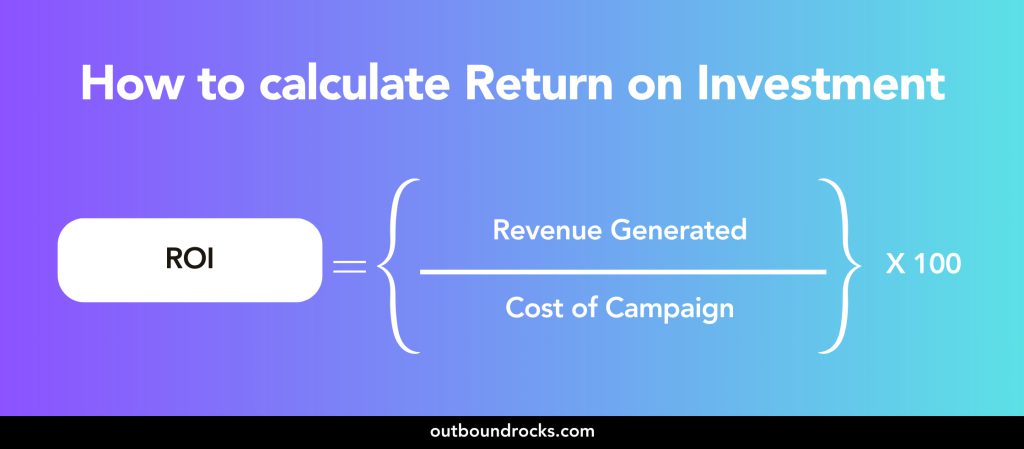
Conclusions
In summary, understanding and tracking your cold email metrics is a critical step in taking your cold email campaign to the next level.
Ready to up your cold email game? Sign up for a free Outbound Rocks account now and try our free trial.